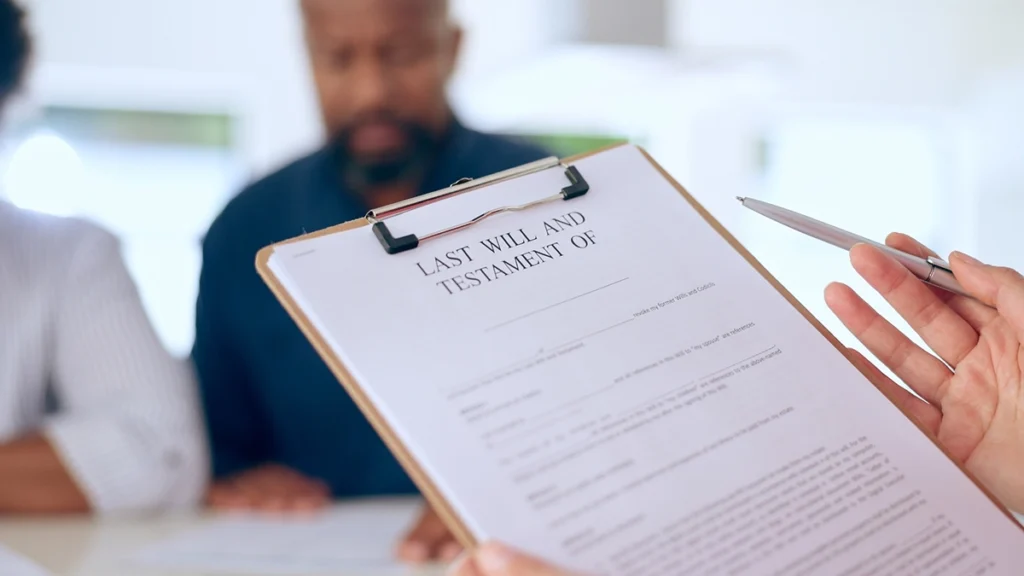When families begin exploring estate planning tools, one option that often sparks curiosity is the Lady Bird Deed, also known as the Enhanced Life Estate Deed. Many wonder where this unusual name comes from, how the deed developed, and why it matters for modern homeowners.
To understand the story, we need to look back at American property law, the legal innovation behind the deed, and the myths that shaped its name.
What Is a Lady Bird Deed?
A Lady Bird Deed is a special type of deed used in only a handful of states, Florida, Texas, Michigan, West Virginia, Vermont, and North Carolina. It allows a property owner (the grantor) to transfer their home to one or more beneficiaries upon death while keeping full control during their lifetime.
Unlike a traditional life estate deed, the Lady Bird version gives the owner the right to sell, refinance, or change beneficiaries without the heirs’ permission. This flexibility is what makes it “enhanced.”
When properly executed, a Lady Bird Deed overrides any conflicting instructions in a will. If the will states that the house should pass to one child, but the deed names another as the remainder beneficiary, the deed controls. This clear transfer mechanism helps families avoid probate, the court process of settling an estate, saving months of time and thousands in fees.
The Origins Of The Life Estate
To trace the roots of Lady Bird Deeds, it helps to start with the traditional life estate. A life estate is one of the oldest concepts in property law. It allows a person to own property only for the duration of their life, after which the property passes automatically to another person, known as the remainder beneficiary.
For centuries, this structure was used to ensure property stayed within families or communities.
However, the traditional life estate has strict limits. Once created, the owner cannot freely sell or mortgage the property without the remainder beneficiary’s consent.
This rigidity caused problems in the modern era, where flexibility is critical for retirement planning, refinancing, or adapting to health changes.
The Legal Innovation In The 20th Century
In the mid-20th century, property lawyers in Florida began crafting deeds that blended the certainty of a life estate with the flexibility of fee simple ownership.
They allowed the grantor to retain control during life while naming a remainder beneficiary for after death. This hybrid deed solved the rigidity problem of traditional life estates.
The innovation spread to a few other states, but not nationwide. Today, only six states formally recognize Lady Bird Deeds. The limited adoption reflects how property law varies from state to state, with each legislature deciding whether to allow this form.
Where Did The Name “Lady Bird Deed” Come From?
The name has a colorful backstory. While no official statute uses the term “Lady Bird Deed,” the label emerged in the 1980s. A Florida law professor reportedly used President Lyndon B. Johnson’s family in a teaching example to show how the deed worked.
He illustrated the concept by saying Johnson could sign a deed granting himself full control for life and transferring the property to his wife, Lady Bird Johnson, upon his death.
The example stuck. Over time, lawyers and title companies began casually calling it a “Lady Bird Deed.” The nickname became so widespread that even though the legal term is “Enhanced Life Estate Deed,” most people still recognize it by the Lady Bird name.
This blending of folklore and law is unusual, but it shows how memorable teaching examples can influence common usage.
Why The Lady Bird Deed Caught On
Several features made this deed attractive to homeowners. First, it avoids probate, which can be time-consuming and costly. Probate requires court filings, attorney fees, and months of waiting before property can transfer. With a Lady Bird Deed, transfer happens automatically with just a death certificate and affidavit.
Second, it preserves control. Unlike a traditional life estate, the owner can still refinance, take out a reverse mortgage, or sell the property if circumstances change. This flexibility reassures many retirees who want security for heirs but do not want to lock themselves into a plan too early.
Third, it can help with Medicaid planning in certain states. In Florida, for example, a home passed through a Lady Bird Deed is not subject to Medicaid estate recovery after the owner’s death. This means families may preserve their home’s value for children instead of seeing it consumed by long-term care costs.
Consider a 72-year-old Florida homeowner who used a Lady Bird Deed to name her son as beneficiary. She still refinanced when she needed funds for home improvements. Later, when she passed, the home transferred directly to her son without probate and without a Medicaid claim. Her decision illustrates how this deed functions in real lives, not just in legal textbooks.
Legal Recognition Across States
It is important to stress that Lady Bird Deeds are not available everywhere. Only Florida, Texas, Michigan, West Virginia, Vermont, and North Carolina recognize them. In other states, homeowners may need to use other estate planning tools, such as Transfer on Death Deeds, trusts, or joint tenancy with right of survivorship.
For families moving across state lines, this distinction matters. A deed valid in Florida may not be enforceable if the homeowner relocates to Georgia or New York, for example.
The Cultural Legacy Of The Name
The Lady Bird Deed demonstrates how law and culture often blend. While the formal legal name is Enhanced Life Estate Deed, the nickname honors Lady Bird Johnson indirectly through a law school teaching example. Over time, the nickname became the dominant label, even though Lady Bird herself had no role in creating or promoting the deed.
The story shows how estate planning can carry not just legal significance but also cultural resonance.
Modern Use In Estate Planning
Today, many homeowners use Lady Bird Deeds as part of a broader estate plan. They are especially helpful for those with a primary residence who want to avoid probate but also maintain flexibility.
Attorneys often recommend them when families want a simple, cost-effective solution without creating a trust. Because the deed overrides a will for that property, it creates clarity and avoids conflicts among heirs.
For example, if a parent’s will leaves the home to all three children equally, but the Lady Bird Deed names only one child as beneficiary, the deed controls. While this can prevent confusion in court, it also underscores the importance of keeping estate planning documents consistent and up to date. Families often review deeds alongside wills and powers of attorney to ensure all tools align.
Common Misunderstandings
Myth: It Works Everywhere
Some people believe a Lady Bird Deed can be used in any state. This is not true. Only six states recognize them. Homeowners in other states must explore alternatives.
Myth: It Protects Against All Creditors
While a Lady Bird Deed can shield property from probate-related costs, it does not erase existing debts or liens. Creditors with valid claims may still pursue payment.
Myth: It Cannot Be Changed
Unlike a traditional life estate, a Lady Bird Deed is flexible. The grantor may revoke or change it anytime during life, without consent from the remainder beneficiary.
How The Deed Fits Into Family Planning
Families often choose Lady Bird Deeds for peace of mind. The automatic transfer avoids court delays and legal disputes. The control during life ensures the homeowner does not feel trapped. And the affordability, usually just a few hundred dollars for preparation and recording, makes it more accessible than creating a trust. When combined with other tools like wills, health care directives, and powers of attorney, it forms a solid foundation for passing property smoothly across generations.
Key Takeaways
- A Lady Bird Deed is an Enhanced Life Estate Deed that keeps control with the owner while naming future beneficiaries.
- The name comes from a teaching example using Lady Bird Johnson, not from any law she sponsored.
- It avoids probate, saves costs, and transfers property quickly with a death certificate and affidavit.
- Only six states recognize Lady Bird Deeds, so location matters when considering this option.



